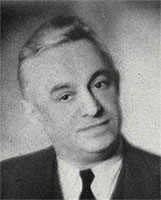
 Maurice Savin was born on October 17, 1894, in Moras (Drôme). After completing his secondary education, he entered the National School of Fine Arts. As a painter, he has been exhibiting at the Salon d'Automne since 1920, where he is a committee member. Some of his paintings are displayed at the Petit Palais and in modern art museums in Paris, Orléans, Valence, Grenoble, Algiers, Tunis, Warsaw, New York, and others. As a member of the Society of Painters Engravers, he has also illustrated numerous books, and his engravings can be found in museums in France and abroad.
Maurice Savin was born on October 17, 1894, in Moras (Drôme). After completing his secondary education, he entered the National School of Fine Arts. As a painter, he has been exhibiting at the Salon d'Automne since 1920, where he is a committee member. Some of his paintings are displayed at the Petit Palais and in modern art museums in Paris, Orléans, Valence, Grenoble, Algiers, Tunis, Warsaw, New York, and others. As a member of the Society of Painters Engravers, he has also illustrated numerous books, and his engravings can be found in museums in France and abroad.
In addition to numerous murals, Savin's notable works include canvas panels for Montélimar, the Students' Sanatorium at Saint-Hilaire-du-Touvet, and the Pavilion of Arts and Crafts at the Cité Universitaire, as well as interior and exterior decorations in concrete slabs in Montluçon. At the same time, he devotes significant time to tapestry and ceramics. The National Furniture Institute commissioned Savin to create four tapestries titled "Pleasures and Rural Labor" in 1941, and in 1945, "The Twelve Months of the Year," both woven at the Gobelins.
Savin's tapestries can be found in private collections and in museums in Cairo, Lausanne, and London. Since his first solo exhibition in 1938, Savin has continued his work as a ceramist. The Petit Palais, the Museum of Modern Art, and other institutions in Grenoble, Sèvres, Stockholm, Gothenburg, and Faenza have acquired his pieces. Additionally, he has designed Medals issued by the French Mint and studied stained glass.
Maurice Savin has been a Knight of the Legion of Honor since 1948. Despite the fundamental differences in techniques, the means of expression of the painter, ceramist, cartoonist, or engraver are intimately related in Savin's works. They all contribute to the same desire to translate the generous strength of nature, which he loves and understands not as a complex intellectual but as an earthy person sensitive to the nobility of rural work, the overflowing joy of a peasant celebration, or the silent serenity of a beautiful summer evening.
In his paintings, opulent tapestries, and vibrant ceramics, there is a mark of happy vitality. For each technique he embraces, Savin humbly submits to the material demands of the craft. For his tapestries, he prefers a beautiful hand-spun and naturally dyed wool fiber, limited to a small range of pure and fundamental tones with rich decorative and mural qualities, which also influences his painter's palette.
As a ceramist, he predominantly works with tin-glazed faience, creating rustic bottles, birds, a precious series of pharmacy jars for Dr. Debat, and sculpted busts (including those of Mrs. Rosa Granoff and Mrs. Savin), all of which demand intricate techniques, making these pieces, as well as his tapestries, unique.
Savin does not limit himself to specific genres. While he once designed ceramic table legs for Jacques Adnet, he also collaborated with Kohlmann to create a large sideboard entirely carved and painted in wood to complement one of his tapestries, for which he made the models.
As a painter and engraver, Savin does not disdain the beautiful craft of an artisan, and all his works are born from the labor of his hands as much as from the ideas in his mind.
Sources : Mobilier et Decoration N°1 Fevrier 1955